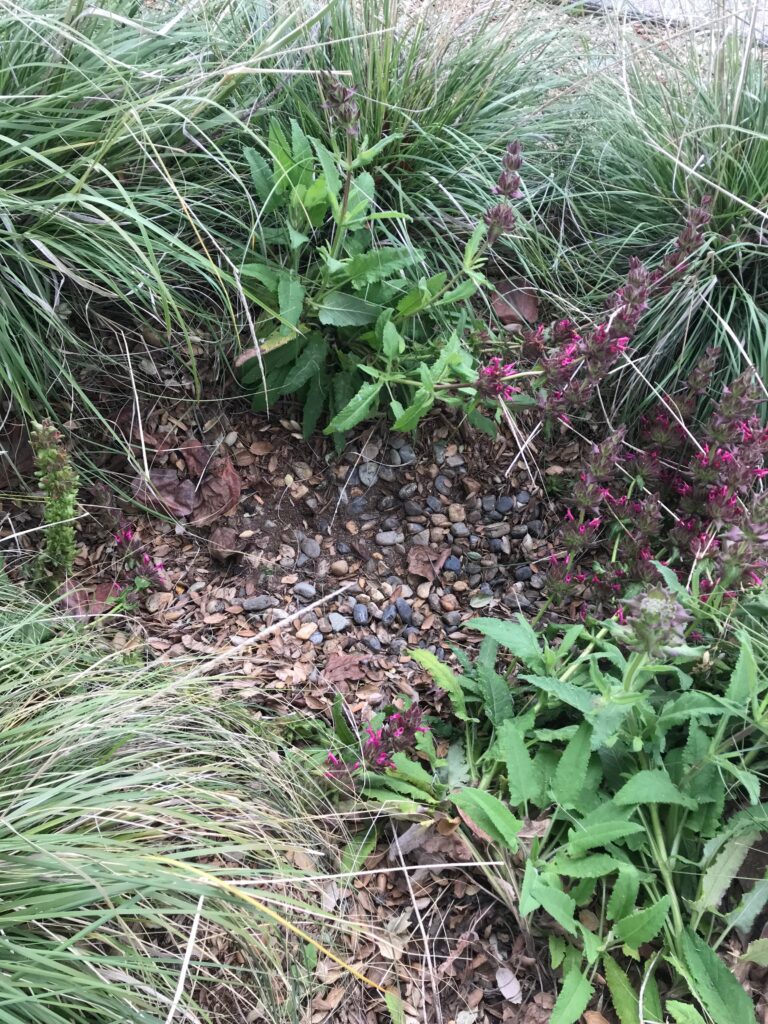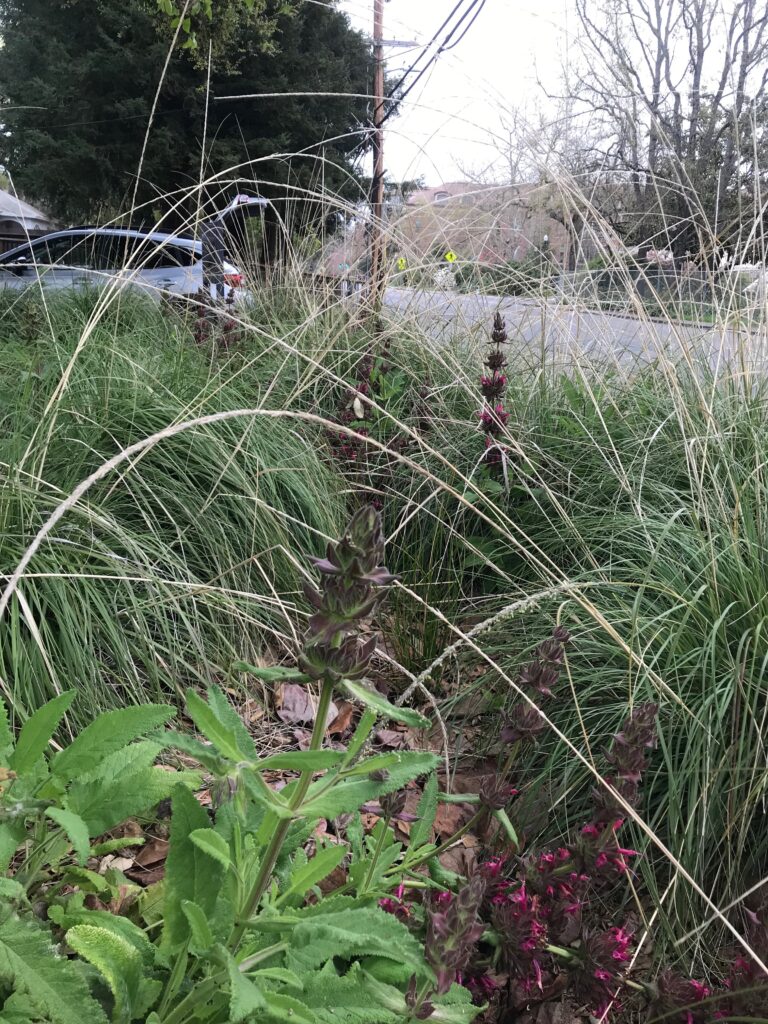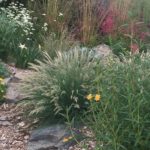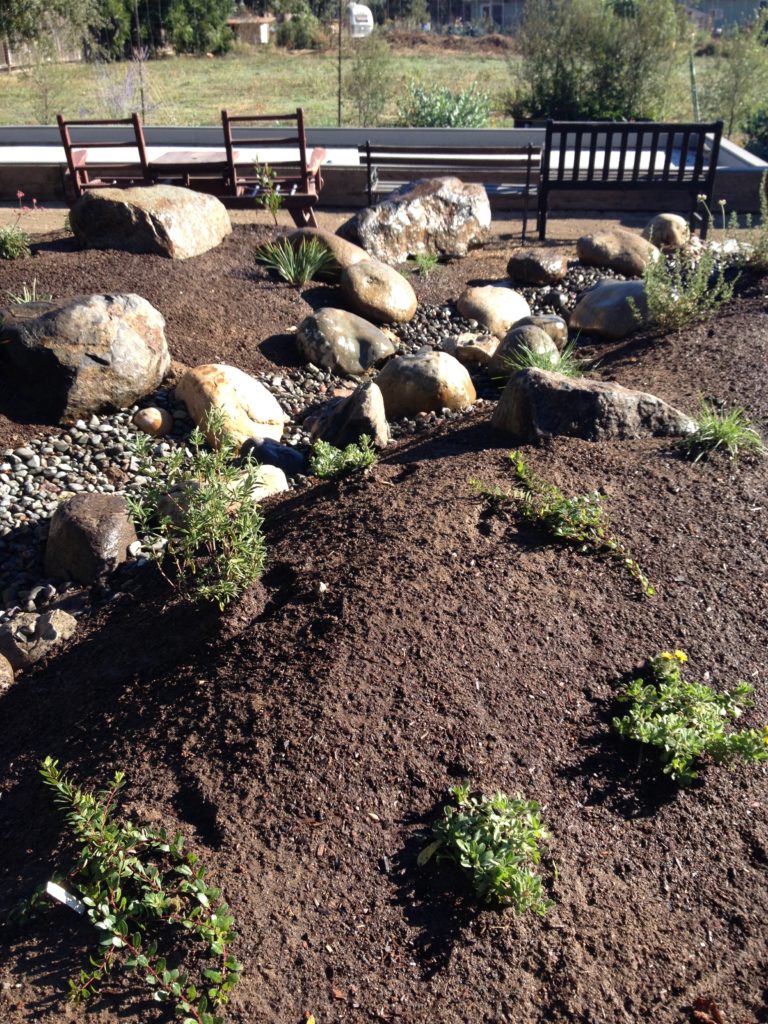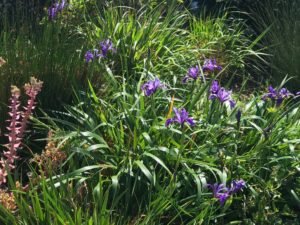Happy Friday!
Greetings,
I have to admit – I am not really a bird person. It sounds terrible to say since our .org is so passionate about creating biodiverse gardens and supporting LIFE in the urban landscape. But no, I don’t really know many of the birds that visit our habitat gardens or flitter by on the many hikes I’ve been on. I was a plant junky and didn’t notice much else but the beautiful California native plants. In the past couple of years, Nancy our co-founder opened my eyes to butterflies and native bees in the garden. Still birds – not so much.
Yesterday, as a part of the naturalist training I’m participating in, I got to go on my first bird walk. I’d always judged these groups of binocular wearing enthusiasts – how boring I thought as they quietly watch those tiny little birds. It was fascinating! Mostly because of our enthusiastic leader Gordon Beebe (go on one of his bird walks, you’ll understand- see below). I learned a ton about birds and their calls – walking up at the front next to him as I have with botanists in the past. Gordon would name off birds as we walked along chatting only from the subtlest hints in little songs and calls! Fun one: if you hear what sounds like a kitten bird sound while hiking in the Oak Woodland it is most likely a Red-chested Sapsucker. These amazing little woodpeckers are responsible for those little horizontal lines of holes in tree trunks (See the photo above). The woodpeckers then go back and eat what they’ve farmed as the sap runs catching a random bug stuck in the sap for a little extra protein. They also love to work apple trees in urban landscapes.
So, using my new birding skills, this morning walking the dog I stopped and listened. The birds were super active. It sounded like a hundred different calls – I couldn’t see a bird! I may only know one or two birds today but I intend to add more. This morning I saw a robin, bluebird, and a hawk. I can’t wait to learn all of the birds that are taking advantage of our demonstration gardens.
Back to work, I am pretty proud of the projects we have brewing and the partnerships we have created. One of our newest is the Sonoma Ecology Center (Sonomaecologycenter.org). We are working closely with them and the UC Master Gardeners to create a set of workshops that dive deep into the idea of a California landscape garden and what is a truly resilient landscape. Hop on over to their website and check them out. This collaboration has also led me to think about the broader and systemic way we need to look at our gardens. Ellie Insley, one of the Sonoma Ecology Center board members, has written an insightful article about the need to be mindful in the landscape from March 1 and August 31st due to bird nesting habits. Please read the text below.
If you are local to Sonoma County please come to our first Sebastopol Corridor Project walking tour, Monday at 2 pm. As we watch these gardens through the seasons we will all learn about who lives there and what they attract. We will try a little birding as well. I’d love to see you in person.
Warmly,
April
Executive Director, the Habitat Corridor Project
503(c) Nonprofit Organization EIN: 84-4353404
[email protected]
HabitatCorridorProject.org
Article by Ellie Insley of the Sonoma Ecology Center
Now is the time to prepare for this year’s fire season by doing defensible space vegetation management. Yes, now, in the middle of winter, before March 1 is the best time! Beginning in early March birds will be nesting and breeding and it’s best not to disturb them.
There are other good reasons to prune in the winter season: many plants are dormant, the best time for pruning; and it’s cool out, so the work is more pleasant than in summer.
But most important – birds such as quail, goldfinch, junco, and others nest on the ground or in the shrubs and tall grasses. If you look closely, you’ll find towhee nests in low forks (3-12’ high) in shrubs or small trees – live oak, Ceanothus, coffeeberry, even poison oak, and many ornamentals. So please don’t remove vegetation when nesting is in full swing March through August!
Home hardening is the most effective thing you can do to protect your house from fire, along with vegetation management. Many government entities require that homeowners maintain defensible space in the area within 100’ of the home. The goal is to interrupt a fire as it approaches the home by removing combustible materials, dead vegetation, and ladder fuels. So pruning dead branches from trees and shrubs, increasing vertical spacing between shrubs and lower limbs of trees, and creating islands of shrubs with space between to interrupt the movement of fire is key.
Remember- Most birds nest from March 1-August 31. Vegetation removal can be very disruptive during bird breeding season, so get it done early. Many birds are protected by the Federal Migratory Bird Treaty Act, and it’s illegal to damage or remove bird nests.
Here’s an excerpt from Cornell Labs, a preeminent source of bird research about California quail nesting: “Female California Quail typically hide their nets on the ground amid grasses or at the bases of shrubs or trees. The nest is usually a shallow depression lined with stems and grasses, and often placed near vegetation or rocks for protection. Nests range from 5-7 inches across and 1-2 inches deep.” Let’s provide a welcome home for the quail, our state bird, by respectfully timing our fire-wise vegetation management.
Guidance on tree care and bird nesting: https://goldengateaudubon.org/conservation/make-the-city-safe-for-wildlife/tree-care-and-bird-safety/
Want to know more right now? Head to these sites.
CalFlora database www.Calflora.org
Audobon Society www.Audobon.org
Our Website: www.HabitatCorridorProject.org
Gordon Beebe (https://www.facebook.com/SSUCEI)
Bird Rescue Center: https://www.birdrescuecenter.org/resources/
WORKDAYS:
(We always start with a site tour. Ask a million questions – we love that)
- Workdays at the Sonoma County Living Learning Landscapes: Every Friday in January and February from 10-12 (Except Holidays and Rain Storms). Get your hands in the dirt and learn about these exciting new demonstration gardens. Contact [email protected] and let us know you will come just in case we cancel. Meet at 425 Elliott Street, Santa Rosa. LivingLearningLandscapes.com
NEW! SEBASTOPOL CORRIDOR PROJECT TOUR
- Last Monday at the Sebastopol Habitat Corridor Project Tour – 2 pm – January 27th join us for our inaugural tour. Finish up your month with us as we visit these delightful gardens and watch them wake up as the season’s change. Meet at 2 pm in front of the Sebastopol Center for the Arts 282 S High St, Sebastopol, CA 95472 for a fun walking/strolling (or any way you get around) tour of our Sebastopol Corridor Project.
